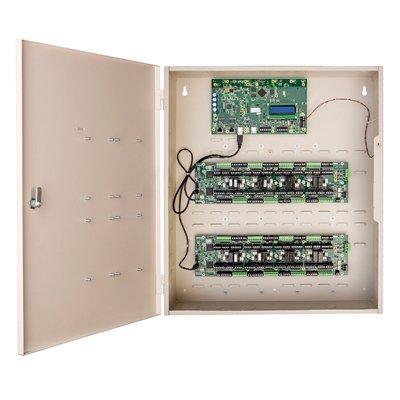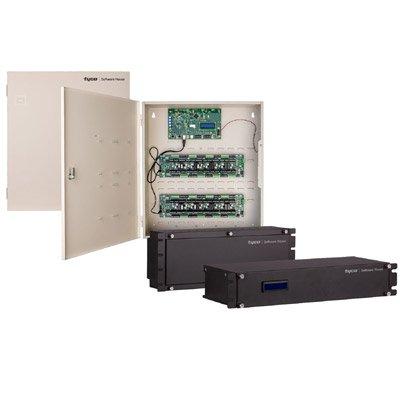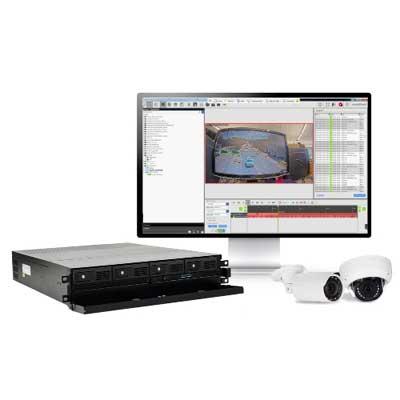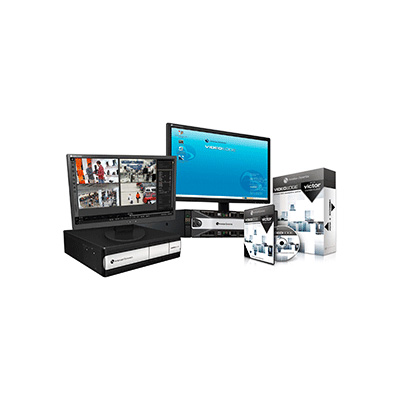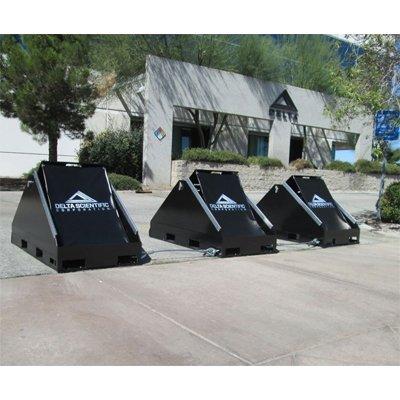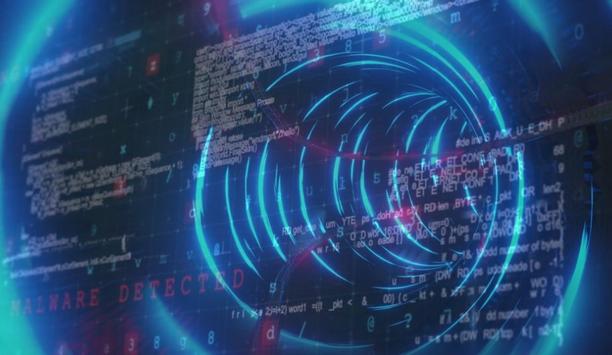The production of electric power by photovoltaic solar panels has been steadily expanding in recent years and many systems of panels have been installed everywhere, on roofs and open fields especially. As a consequence of the value and increasing demand of these devices, theft has become an issue, and in spite of some initial protection by CCTV cameras this has so far shown to be ineffective at protecting these high value targets.
To protect these installations, a simple and reliable fibre optic based protection system has been developed. The ComNet FDC1/2 fibre optic cable break detectors are usually installed in a control room, however they can also be installed in an anti-tamper protected cabinet as the units are rated to operate under extensive temperatures up to +75 °C and support a wide DC voltage input.
From the unit a fibre optic protective loop is connected, the first end of the dielectric fibre optic cable is connected to the optical transmitter output and the second end to the optical receiver input. Usually the fibre optic cable, housing one single fibre, either single mode or multimode depending on the distance to cover, has the diameter of 2-2.8mm and includes the tight fibre 0.9 mm and a layer of aramidic yarn for mechanical protection, under the external coating which is made of compounds suitable for outdoor installation. Using fibre optic cable in this way offers a cost effective solution without the possibility of the cable being bypassed by use of a jumper as would be possible with a copper cable.
The optic connection is made by ST type terminating connectors at the two ends of the cable, coupled to the ST bulkhead adapters of the optical transmitter output and of the optical receiver input. The optical cable is woven through the metal frame of solar panels prior to being connected to the FDC1/2 unit, in such a way that the panel cannot be removed without breaking the optical cable. The FDC1/2 unit constantly monitors the status of the attached fibre optic cable and can trigger an alarm relay output in less than 0.5ms of a cable break or tamper being detected. The relay output can be configured as a normally open or normally closed contact for maximum flexibility.
The result of this protection is that, by a limited investment, it is possible to protect a much larger investment in the complete solar panel power generating system. Additional cost savings can be made by using the FDC2 series which can monitor two independent fibre optic protection loops in a single device allowing for maximum equipment density.
ComNet Develops Reliable Fibre Optic Protection System For Solar Panels
- Related companies
- ComNet Europe Ltd.
- Related categories
- Surveillance cameras
- Power supplies & batteries
- Cables & cable assemblies
- Security Monitors
- View all news from
- ComNet Europe Ltd.
Related videos
In case you missed it

Transportation systems need robust physical security to protect human life, to ensure economic stability, and to maintain national security. Because transportation involves moving...

Global security manufacturer Gallagher Security is proud to announce a strategic partnership with Fortified Security, a pioneering perimeter systems integrator with over 30 years o...

Genetec Inc., the global pioneer in enterprise physical security software, highlights why data sovereignty has become a central concern for physical security leaders as more survei...





